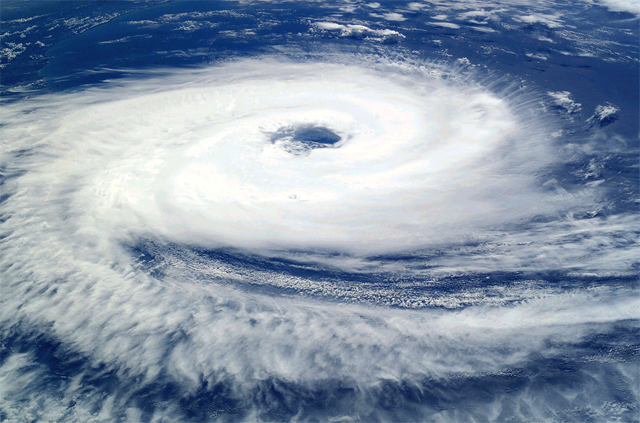 |
Storms
ahead
 I'm
afraid worse is to come: people who study earth's climate have found that
as it I'm
afraid worse is to come: people who study earth's climate have found that
as it  warms
up, the weather is going to get more violent and unpredictable. Hurricanes,
for example, will become more powerful — a big worry for people living
in the south of the United States and in the tropical Pacific or Indian
ocean areas like the Philippine islands and Bangladesh. Deserts
are increasing and places like the Great Plains of America will get drier.
Rain will be heavier in other parts of the world so there will be more
floods. These things have already started to happen. warms
up, the weather is going to get more violent and unpredictable. Hurricanes,
for example, will become more powerful — a big worry for people living
in the south of the United States and in the tropical Pacific or Indian
ocean areas like the Philippine islands and Bangladesh. Deserts
are increasing and places like the Great Plains of America will get drier.
Rain will be heavier in other parts of the world so there will be more
floods. These things have already started to happen.
 What is El Niño? What is El Niño?
This is a huge climate 'event' during which winds and sea surface temperatures in the tropical Pacific Ocean go into reverse. All kinds of weird weather happens worldwide because of this, much of it very damaging. El Niño events erupt every few years and peak arond Christmas: El Niño (Spanish) means The Child (Jesus). 2015-16 has seen the biggest El Niño episode for some years. Climate change seems to be making El Niño events stronger. More on what happens...
 
Also called typhoons or cyclones. The image is of cyclone Catarina, taken from the International Space Station. It was the first hurricane seen in the South Atlantic Ocean; March 26 2004, near Brazil (NASA).
  On November 8, 2013, Typhoon Haiyan struck the Philippines. It was one of the strongest tropical cyclones ever recorded with wind speeds up to at 285 kilometres per hour (180 mph). Haiyan did terrible damage to several parts of South East Asia, but especially the Philippines where well over 6,000 people were killed. The animation of Typhoon Haiyan is from infrared satellite images (NOAA)
 
Heavy rains and serious floods have been affecting northern and eastern Europe in recent years. In the summer of 2007, Britain had the worst floods since records began. But much worse was to come. Parts of Britain have had record-breaking quantities of rain during the winter of 2015-16. Large areas have been underwater and many towns have been repeatedly flooded. This is exactly what climate change science predicts: more storms and more heavy rain. York floods, UK, 2015 (Richard Scott)
 What does El Niño do?
What does El Niño do?In normal years, strong winds (called 'trade winds') blow from east to west across the equatorial Pacific Ocean. Among other things, this has the effect of dragging up deep, cold waters off the South American coast. At the west side of the Pacific Ocean, the waters are warm and there is plenty of rain. When an El Niño event (called El Niño Southern Oscillation or ENSO for short) happens, everything goes into reverse. This can mean serious droughts in countries like Indonesia and heavy rain and flooding in other places where it is normally dry. But El Niño affects far more than just the Pacific region. It also causes terrible drought and famine in parts of Africa. El Niño is very complex and causes disturbances and bizarre weather events over much of the planet. It usually lasts about a year, peaking in activity at around Christmas. It also releases a lot of heat into the atmosphere so 2015 was the hottest year on record.
|

